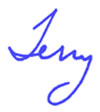Dear Lee,
What does it take to start a new collecting fad? Commercially created collectibles like limited-edition plates or Beanie Babies can do it, but so can the demand created by a single collector on a mission. We have seen many examples of collector-initiated fads in the past. There was the lunch-box craze started by a few East Coast collectors, then promoted by a book, a website, magazine articles and a widely advertised auction. Prices went way up, but then settled down. The same promoter tried the same tactics to push cereal-box collecting, but he didn’t get the same great results.
Similar campaigns have affected the markets for Bakelite jewelry, Gaudy Dutch ware, Fulper pottery, Ansel Adams photographs and cookie jars. In each case, a single collector bought items at high prices, igniting demand and making prices go even higher. The stories don’t necessarily have happy endings. It turned out one of the buyers was embezzling, and another went broke. Cookie jars jumped in price for a short time because of the publicity surrounding the 1987 sale of Andy Warhol’s collection, but prices settled down after a while.
We saw local demand at work when we visited an area flea market. Dealers kept telling us about “the button lady” who was buying bags of buttons. We later saw her in action, buying more buttons—a single buyer creating a big demand. We asked her what she does with all the buttons. She said her oldest son is serving in the Army in Afghanistan, causing her a lot of stress. At a show she went to awhile ago, she saw some bracelets made from old buttons. Making button bracelets became her new hobby, then a business. “Making antique button bracelets has completely taken away my anxiety about my son’s deployment,” she told us. Meanwhile, dealers at the flea market said they’re going to stock up on buttons to sell to her in the future. A mini fad has begun.




Leave a Reply
You must be logged in to post a comment.